Best verbena varieties – 5 dazzling choices we adore for a delicate touch to borders and pots
Vibrant, versatile, and popular with pollinators, everyone needs verbena in their garden
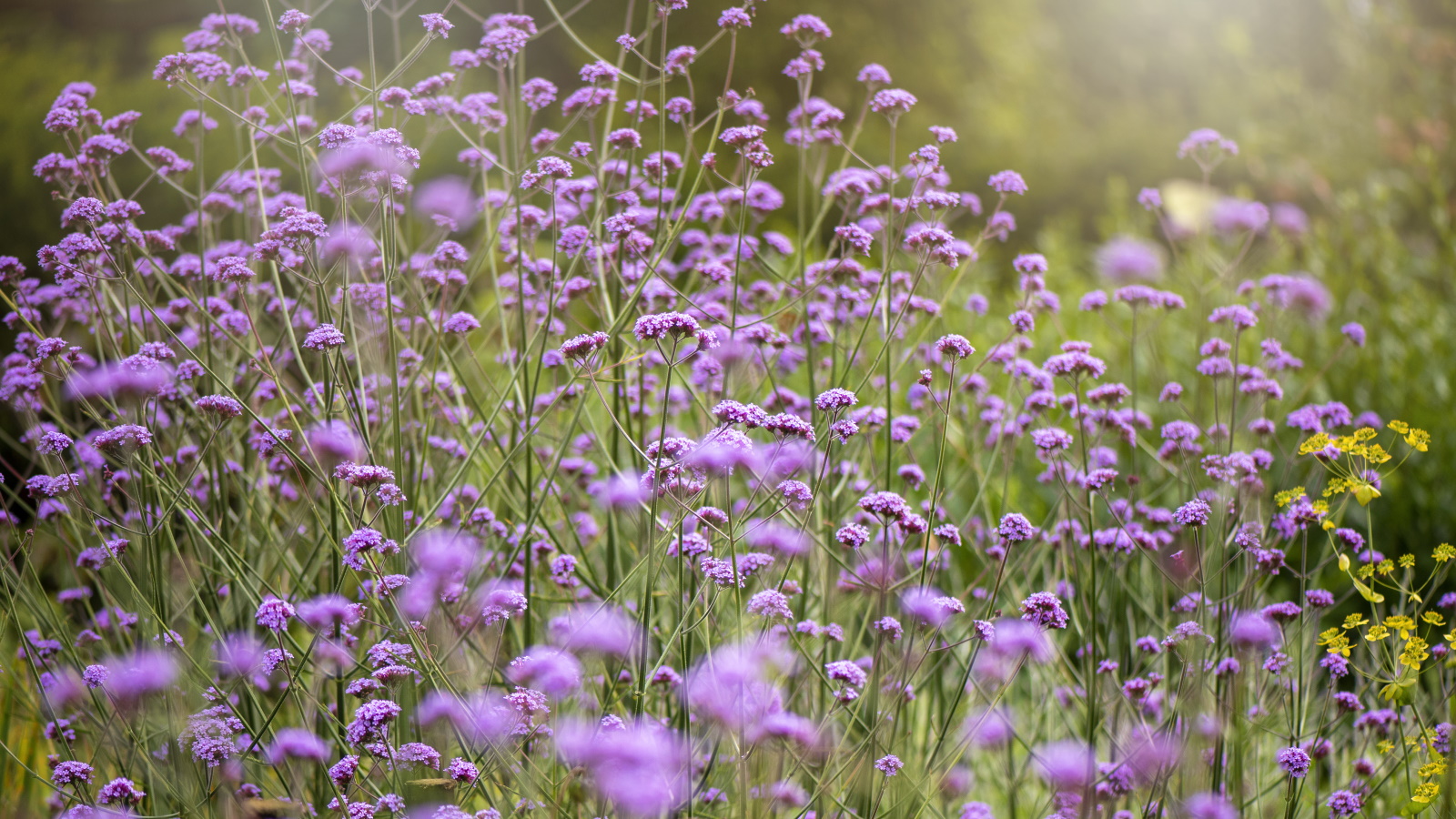

Verbena is a large genus of flowering plants, commonly found in cottage gardens. They're popular for their bright color palette of pinks and purples, and they're magnets for pollinators. Verbena also has a long flowering period, from spring to fall.
If you're keen to grow verbena, you may be feeling a little overwhelmed by the large choice of varieties. For example, varieties like V. bonariensis offer flat clusters of blooms, while V. hastata rather has flower spikes offering some architectural structure. No matter the gap you're looking to fill in your yard, there's a verbena variety for every space – even containers.
To help you find the right choice for your backyard idea, myself and the rest of the Gardens team here at Homes & Gardens have picked out our most loved verbena varieties. We also share some tips on how to grow them, so you can easily incorporate this staple into your yard.
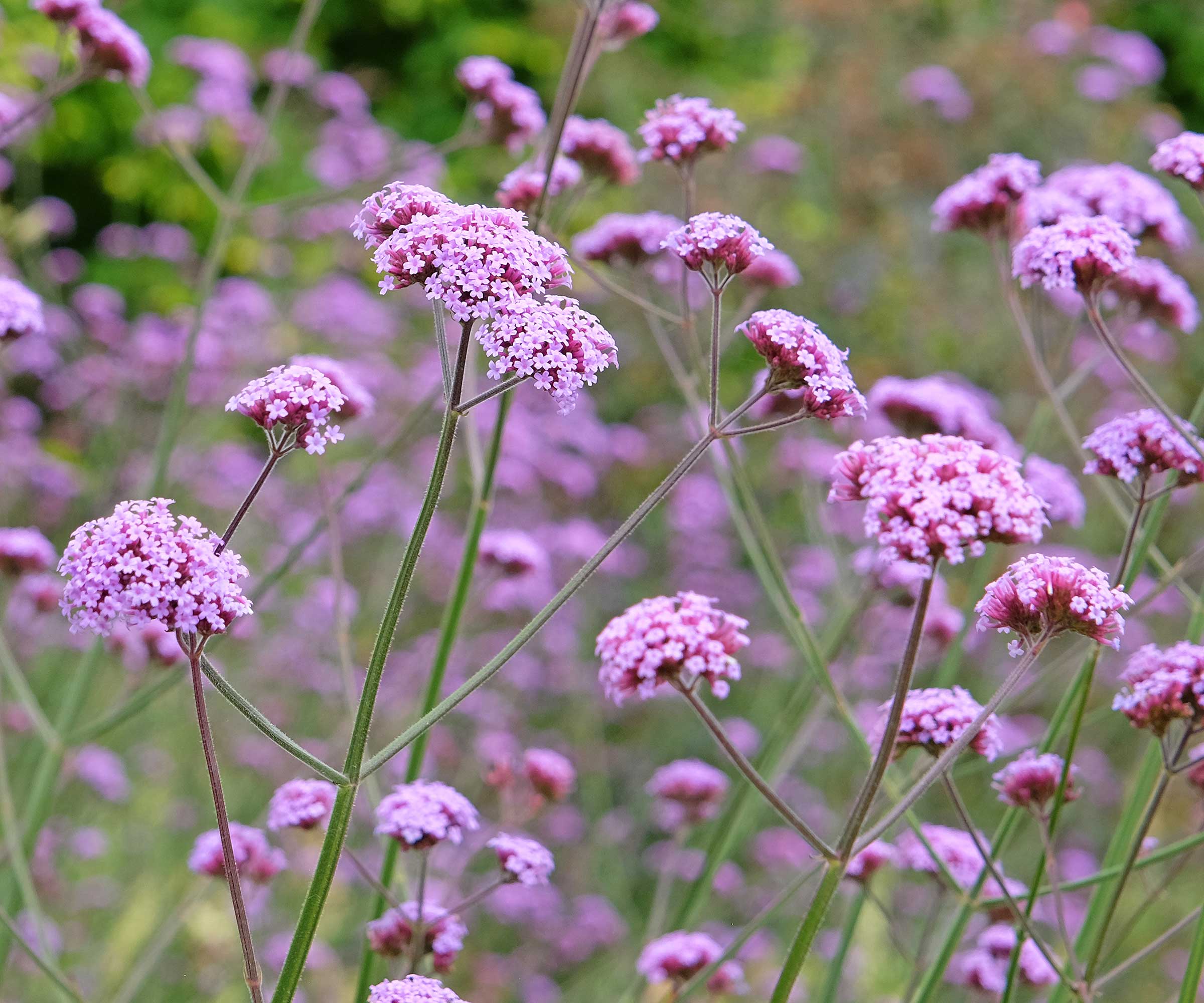
5 dazzling verbena varieties
Other considerations to keep in mind when exploring verbena varieties include your US hardiness zone and what you're looking to achieve.
You may want a taller variety with a long stem if you wish to grow them for cut flowers, or a low-growing variety if you're looking for a flowering ground cover plant. Plus, some verbena varieties are grown as perennials, while others are better suited as annuals.
1. V. officinalis var. grandiflora 'Bampton'
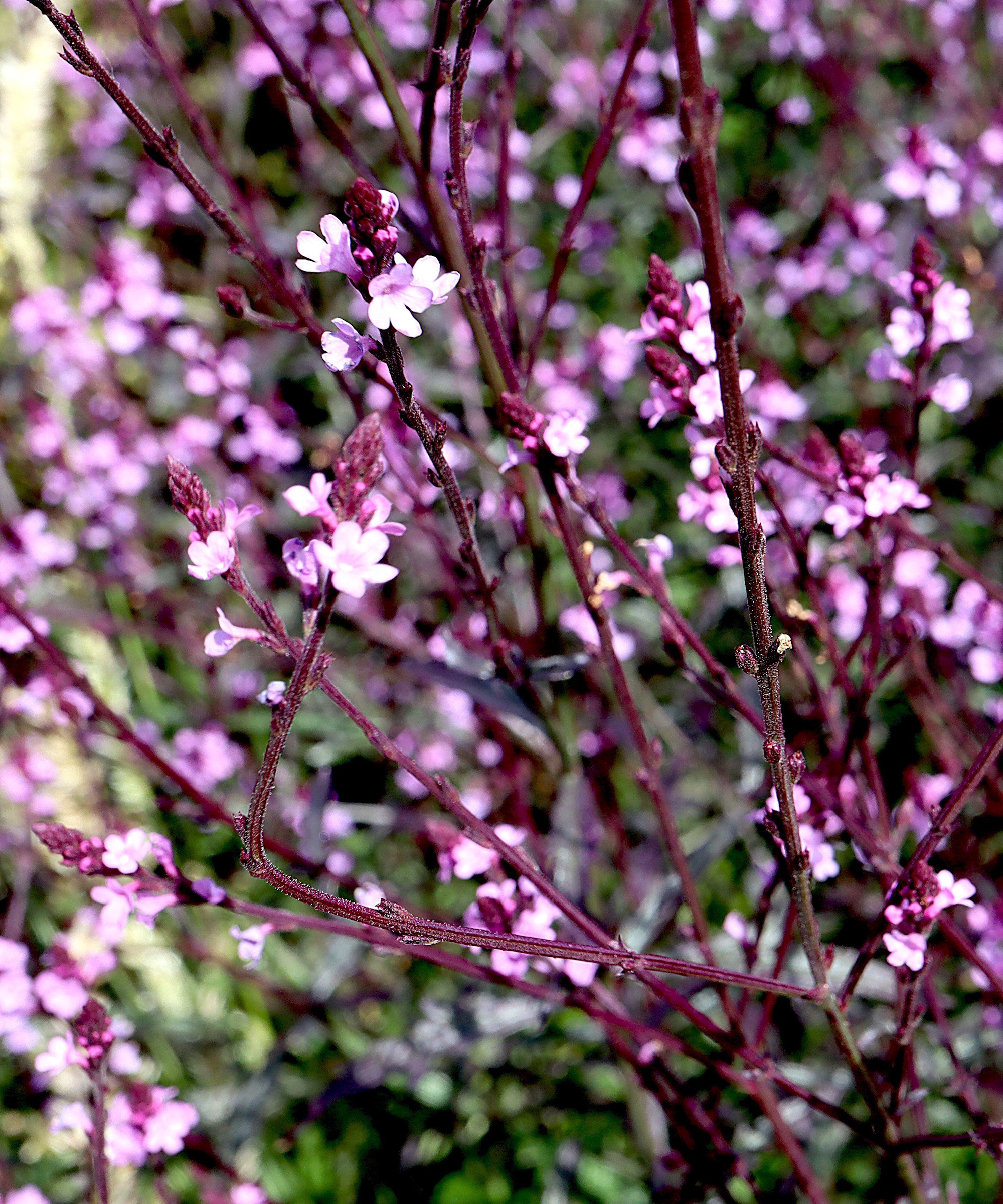
- Perennial
- Hardiness: US hardiness zone 4 to zone 9
- Best for: Full sun
This is a great option for those with a south-facing garden, as V. officinalis var. grandiflora 'Bampton' is a sun-worshipper.
'I love it because it is a long-flowering, sun-loving variety, that will bloom for much of the summer,' says Homes & Gardens' Gardens Content Editor Thomas Rutter. 'Plus, it has purple-tinged leaves which are a nice addition to borders and pots,' he adds.
Design expertise in your inbox – from inspiring decorating ideas and beautiful celebrity homes to practical gardening advice and shopping round-ups.
With delicate stems and dark foliage, this is one of the verbena varieties that brings elegance to naturalistic or cottage garden planting schemes.
'Bampton' is great for drought-tolerant planting once established, and does best in a well-draining, fertile soil type.
You can use this soil test kit from Amazon to learn more about the soil in your yard.

Thomas is a Content Editor within the Gardens Team at Homes and Gardens. He has been working as a gardener and garden writer for several years. Whilst completing his Horticultural Traineeship at the Garden Museum, London, he was able to gain experience at many of the UK's world-famous gardens, including Sissinghurst, Lowther Castle, and Iford Manor. Following this, he worked for two private estates in Tuscany, Italy.
2. V. tenuisecta

- Typically perennial, but sometimes grown as an annual in colder climes
- Hardiness: US hardiness zone 7 to zone 11
- Best for: Ground cover
This is a verbena variety to opt for if you need a colorful fast-growing ground cover plant to brighten up your backyard landscape.
Pictured here is pink moss verbena, but it also comes in white and purple hues – this moss verbena seed mix from Amazon will provide you with a selection of bright colors.
It's also loved for its fern-like foliage and ability to tolerate partial shade, although it much prefers a sunny position.
This verbena can also grow well in poor soil types, but it doesn't like heavy, wet clay soil. Once established, it's also drought-tolerant and works well for xeriscaping.
3. V. bonariensis 'Lollipop'
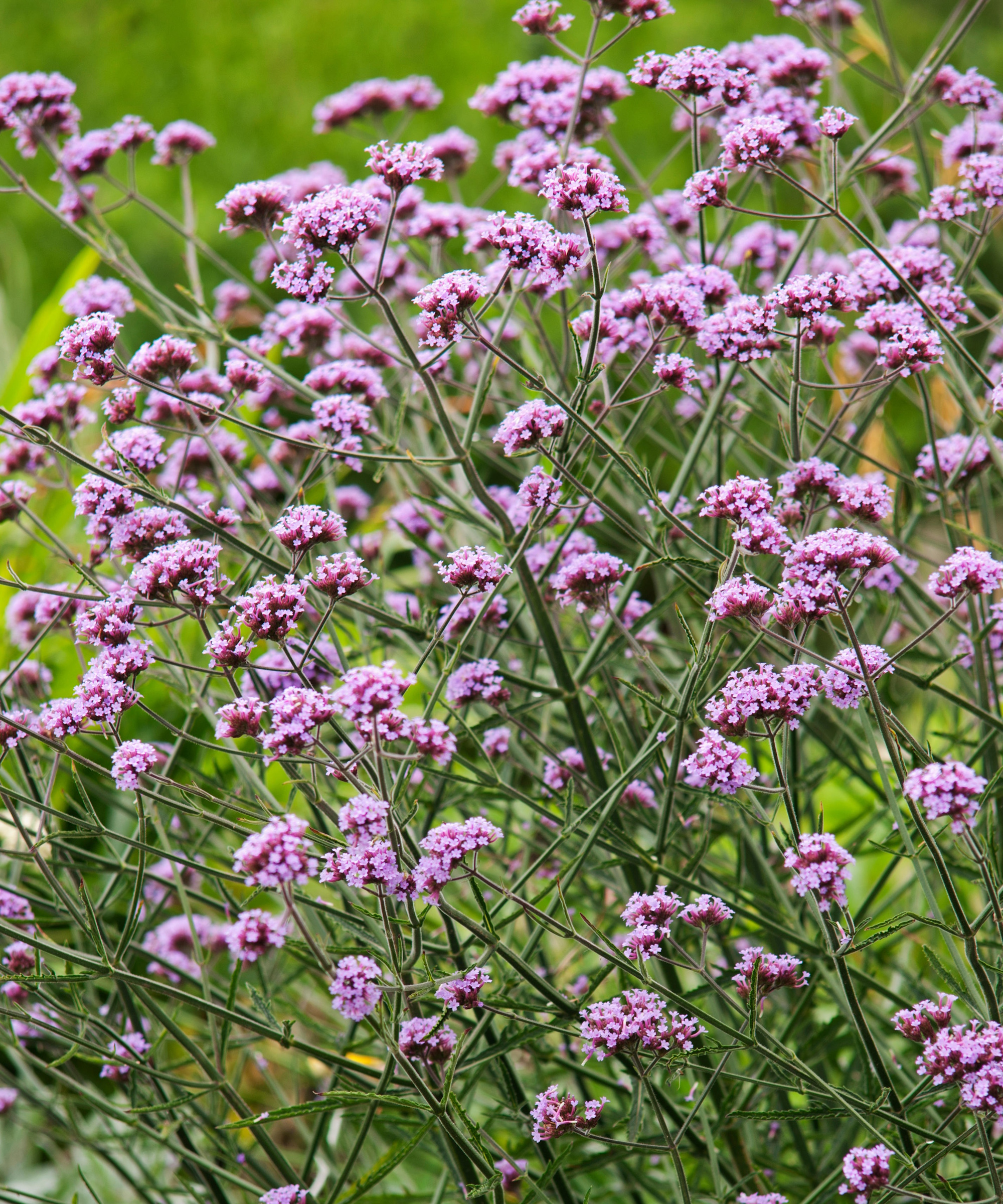
- Perennial
- Hardiness: US hardiness zone 7 to zone 11
- Best for: Filling gaps in borders
If you're in desperate need of filler plants for sparse flower beds and borders, consider the compact verbena variety V. bonariensis 'Lollipop.'
'This is a bit of a staple in my garden, as I have deep borders. 'Lollipop' makes it easy to achieve a fuller look,' says Homes & Gardens' Head of Gardens, Rachel Bull.
This verbena only grows to a height of 18–24 inches and a spread of around 18 inches, forming a mound of lavender blooms.
It's a popular plant for pollinators, too, and will continue to flower from spring to frost if you keep deadheading your verbena through the season.
You'll need essential pruning tools for this, like these pruning shears from Amazon.
Find V. bonariensis seeds on Amazon.

Rachel is a gardening editor, flower grower and floral designer. Her journalism career began on Country Living magazine, sparking a love of container gardening and wild planting. After more than a decade writing for and editing a range of consumer, business and special interest titles, Rachel became editor of floral art magazine The Flower Arranger. She then trained and worked as a floral designer and stylist in London for six years, before joining the Homes & Gardens team.
4. V. hastata f. rosea

- Perennial
- Hardiness: US hardiness zone 3 to zone 8
- Best for: Late-season color
V. hastata is commonly known as blue vervain (you can find seeds on Amazon), but f. rosea is a pink version, displaying tall, upright flower spikes which work well for adding height to borders.
This is one of the verbena varieties to choose for late summer flower color, flowering into September. It also has lance-shaped, toothed green foliage which brings green interest during this time, too.
Unlike other verbena varieties, V. hastata prefers consistently moist soil. Drought will slow down the bloom rate of this plant, although a bloom booster (from Amazon) can help your verbena recover from this.
This is a great choice if you want to attract butterflies and bees, and it works well in wildflower meadow planting.
5. V. x hybrida Lanai 'Candy Cane'
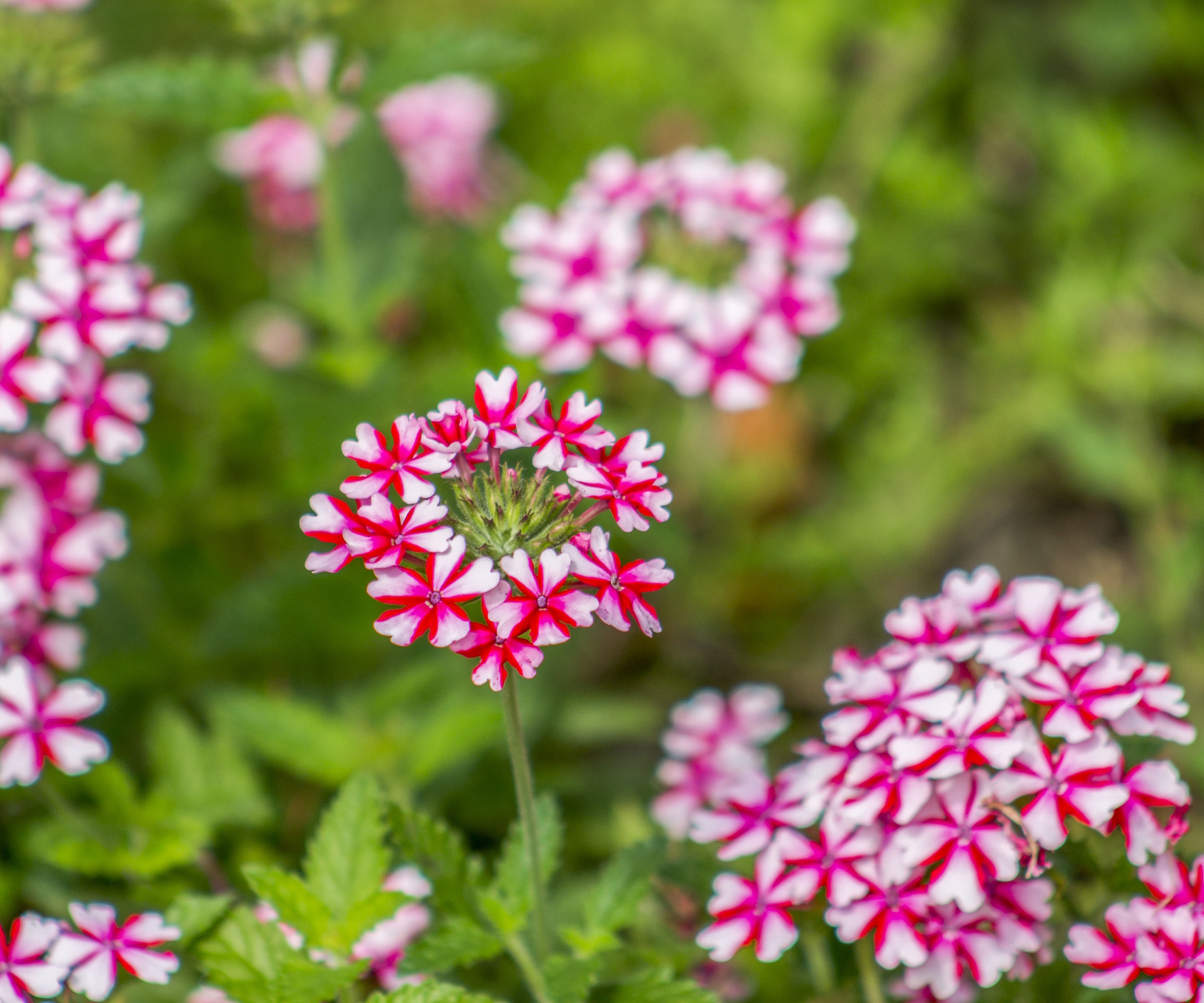
- Annual
- Hardiness: US hardiness zone 8 to zone 11
- Best for: Hanging baskets
This is a verbena variety I personally love. It's a hybrid species that has been bred for profuse blooms and vigor in the garden, so it's a reliable choice for a vibrant summer display with its candy stripe pattern.
It's a compact variety, growing to a height and spread of 6–10x18–24 inches, with a trailing habit that makes it ideal for hanging baskets and a container garden.
This variety also has a powdery mildew resistance and it has a bit more of a low-maintenance nature. It even blooms until fall, so it's one you can plant up, leave alone, and enjoy through summer.
Just make sure to top up water as it dries out, although it is a bit more drought-tolerant once established.
Paired with coco coir hanging baskets (from Amazon), there's no doubt this type of verbena will wow visitors at your front door.
FAQs
Do slugs attack verbena?
Some verbena varieties are more susceptible to slug damage than others. Verbena bonariensis, for example, is more slug-resistant thanks to its rough, hair foliage. If your verbena is being attacked by slugs, consider slug control methods. This includes companion planting with pest-repellent plants, like marigolds.
These are just some of our favorite verbena varieties, but there are so many others to explore – take a look at Nature Hill's verbena collection, for example. And once you have found one that suits your yard, you can try taking verbena cuttings to propagate.

Tenielle is a Gardens Content Editor at Homes & Gardens. She holds a qualification in MA Magazine Journalism and has over six years of journalistic experience. Before coming to Homes & Gardens, Tenielle was in the editorial department at the Royal Horticultural Society and worked on The Garden magazine. As our in-house houseplant expert, Tenielle writes on a range of solutions to houseplant problems, as well as other 'how to' guides, inspiring garden projects, and the latest gardening news. When she isn't writing, Tenielle can be found propagating her ever-growing collection of indoor plants, helping others overcome common houseplant pests and diseases, volunteering at a local gardening club, and attending gardening workshops, like a composting masterclass.
You must confirm your public display name before commenting
Please logout and then login again, you will then be prompted to enter your display name.